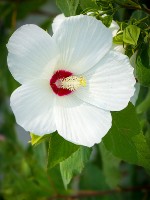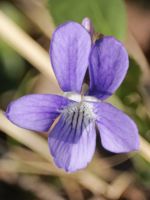Mon-Fri 9am - 5pm Mountain time
Swamp Rose Mallow (Hibiscus) vs Early Blue Violet
Hibiscus moscheutos
Viola adunca
NOT AVAILABLE THIS SEASON - MIGHT RETURN
NOT AVAILABLE THIS SEASON - MIGHT RETURN
Swamp Rose Mallow (Hibiscus) has large white-pink showy flowers which attract hummingbirds and pollinators to your yard. It is a tall, fast growing perennial shrub. The flowers typically only last 1-2 days, but the plant will continue to rebloom throughout the season.
This hibiscus tolerates heat and humidity but does not do well when exposed to wind. Make sure the plant has access to lots of moisture for better flowering.
The Swamp Rose Mallow (Hibiscus) is also known as the dinner plate hibiscus because it can grow incredibly large flowers, as big as dinner plates.
Early Blue Violet is a low-growing native perennial wildflower valued for its striking early-spring blooms. The flowers range in color from vibrant blue to deep violet, often marked with pale highlights and fine white hairs. They provide an important early nectar source for pollinators and serve as a host plant for several fritillary butterfly species.
It spreads by both seed and rhizomes, gradually forming small colonies. Its dark green, heart-shaped leaves add ornamental appeal, and the plant shows some resistance to deer browsing. Early Blue Violet is well-suited to naturalization projects and pollinator-friendly gardens, and has also been used in coastal butterfly habitat restoration in the Pacific Northwest.
Swamp Rose Mallow (Hibiscus) Quick Facts
Early Blue Violet Quick Facts
Toxicity: rhizomes, fruit, seed poisonous to humans

